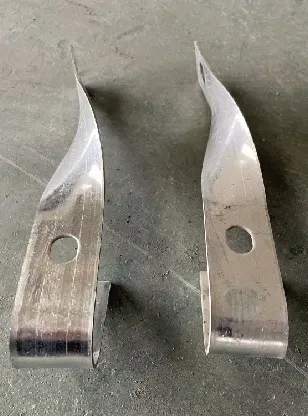loading...
- No. 9, Xingyuan South Street, Dongwaihuan Road, Zaoqiang County, Hengshui, Hebei, China
- admin@zjcomposites.com
- +86 15097380338
- Welcome to visit our website!
Pricing for GFRP Bars and Market Trends in 2023
Understanding GFPR Bars Pricing and Market Trends
Glass Fiber Reinforced Polymer (GFRP) bars have emerged as a popular alternative to traditional steel reinforcement bars in construction due to their remarkable properties. Known for their high strength-to-weight ratio, corrosion resistance, and non-conductive nature, GFRP bars are increasingly being adopted in various structural applications. However, one of the critical considerations for constructors and engineers alike is the price of GFRP bars.
What Influences the Price of GFRP Bars?
The pricing of GFRP bars is influenced by several factors
1. Raw Material Costs The primary components in the production of GFRP bars are glass fibers and resin. Fluctuations in the prices of these raw materials directly affect the overall cost of GFRP products. The glass fiber market can be particularly volatile, influenced by global demand and production rates.
2. Production Technology GFRP bars are manufactured using advanced composite technology, which can be capital-intensive. The costs associated with the machinery, tooling, and technology also play a significant role in determining the price of the final product.
3. Market Demand As construction industries across the globe increasingly recognize the advantages of GFRP bars, demand has risen. This growing market can lead to price increases. Conversely, if demand wanes, prices may stabilize or decrease.
4. Geographic Variations Prices can vary significantly from one region to another due to transportation costs, local regulations, and the availability of raw materials. Some regions may have more established supply chains for GFRP products, which can help to keep costs lower.
gfrp bars price

5. Design and Customization GFRP bars can be designed and customized for specific applications, which can drive up costs. Complex shapes or specialized configurations require precise engineering and additional expenditure in production.
Current Market Trends
As of 2023, the market for GFRP bars is witnessing several trends that influence pricing
- Increased Adoption in Infrastructure There is a marked shift towards using GFRP bars in critical infrastructure projects, such as bridges and tunnels. This shift not only enhances longevity but also reduces maintenance costs over the lifespan of the structure, thereby justifying the initial investment in GFRP materials.
- Sustainability Awareness With a growing emphasis on sustainability in construction practices, the demand for non-corrosive and lightweight materials is increasing. GFRP bars offer environmental benefits by contributing to the reduction of the carbon footprint in construction activities.
- Technological Advancements Innovations in composite material technology are continually improving the quality and performance of GFRP bars. New production techniques can lead to cost reductions, making these materials more accessible to a broader range of projects.
Conclusion
While the price of GFRP bars can initially seem high compared to conventional construction materials, their long-term benefits and reduced maintenance needs present significant value. Understanding the factors influencing the price of GFRP bars and current market trends can help stakeholders make informed decisions on their use in construction projects. As the industry continues to evolve, it is expected that advancements in technology and increased competition will further refine pricing strategies, making GFRP bars an increasingly viable option for modern construction needs.
-
The Rise of FRP Profiles: Strong, Lightweight, and Built to LastNewsJul.14,2025
-
SMC Panel Tanks: A Modern Water Storage Solution for All EnvironmentsNewsJul.14,2025
-
GRP Grating: A Modern Solution for Safe and Durable Access SystemsNewsJul.14,2025
-
Galvanized Steel Water Tanks: Durable, Reliable, and Ready for UseNewsJul.14,2025
-
FRP Mini Mesh Grating: The Safer, Smarter Flooring SolutionNewsJul.14,2025
-
Exploring FRP Vessels: Durable Solutions for Modern Fluid HandlingNewsJul.14,2025
-
GRP Structures: The Future of Lightweight, High-Performance EngineeringNewsJun.20,2025
